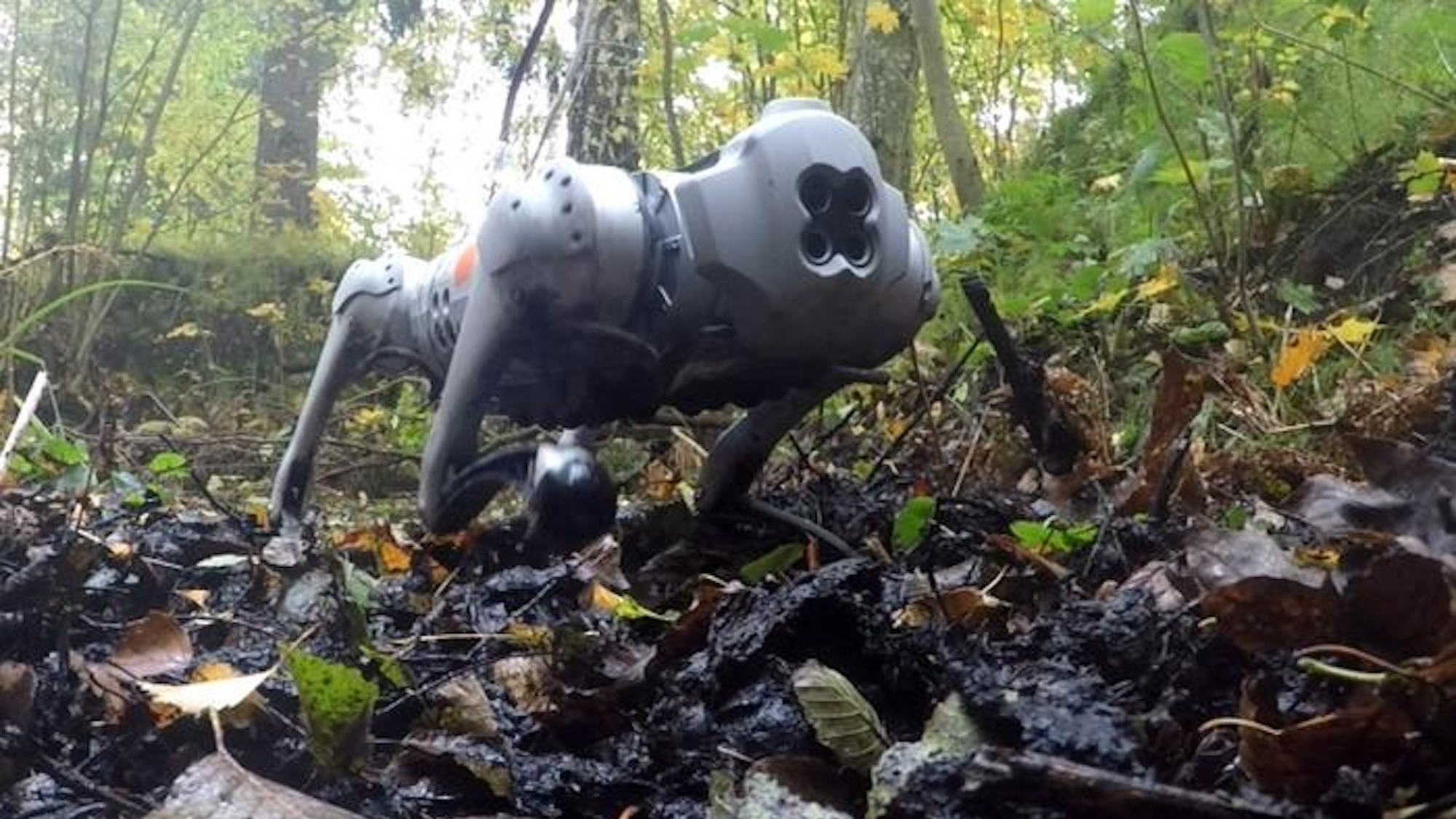Many quadrupedal robots can adeptly handle uneven or sloped terrain, but only if the ground beneath them is relatively stable. Factor in slippery or muddy surroundings and four-legged machines may quickly falter or fail completely. But one engineering team believes they found a solution in mimicking animals often found in boggy habitats. According to a study published in Bioinspiration & Biomimetics by researchers at Estonia’s Tallinn University of Technology (TalTech), dog bots could soon take their cues from giant moose.
[Related: Why animals run faster than their robot doppelgängers… for now.]
“[M]ost robots cannot access a wide range of highly important terrestrial environments, including wetlands, bogs, coastal marshes, river estuaries and fields, which are abundant in nature,” explained TalTech biorobotics professor and team lead, Maarja Kruusmaa, in an accompanying statement on January 2nd.
Ungulates (split-hooved animals like cattle and moose), however, are evolutionarily equipped to handle these often sticky situations. After conducting physical experiments observing actual moose feet, researchers found that cloven hooves are key to maneuvering through mud and similarly waterlogged terrain. This is due to the ability of split-hooves to both spread out and contract during each footfall. Each toe’s exposed contact area increases and reduces as it steps into and out of muddy ground, thereby helping a moose to avoid sinking too far into the mire. But more important are the cloven hoof’s suction properties.

“We found that the moose’s hoof behaves similarly to a suction cup, like how you manage to stick your fingernail under its surface and break the suction force,” said Simon Godon, a biorobotics doctoral candidate and study co-author.
Godon also likened mud’s physical properties to wet bathroom tile as it sticks to your feet after stepping out of the shower. But unlike humans, a moose’s shifting hooves better allow it to break that surface tension and avoid getting stuck in the muck.
Following their moose tests, researchers then designed silicone slippers for a quadrupedal robot. According to results from their lab analysis, the ungulate-inspired booties reduced sinkage depth by about 46 percent and lessened suction force by roughly the same amount. The accessories also lowered the machine’s walking energy cost by as much as 70 percent.
[Related: Casio thinks an AI-powered furball can replace your pet.]
From there, engineers took one of their own moose-footed dog bots for a stroll in the Estonian woods. Further measurements indicated an over 38 percent reduction in mechanical transport cost, as well as a 55 percent boost to speed. What’s more, the team wrote in their study that they “did not find any disadvantages of the split-hooves-inspired design on hard ground.”
“[This] suggests that redesigning the feet of quadruped robots improves their overall versatility and efficiency on natural terrains,” they concluded.
With these simple silicone alterations, future quadruped robots may be able to access previously impossible environments to assist in land surveys, security, as well as rescue work.


